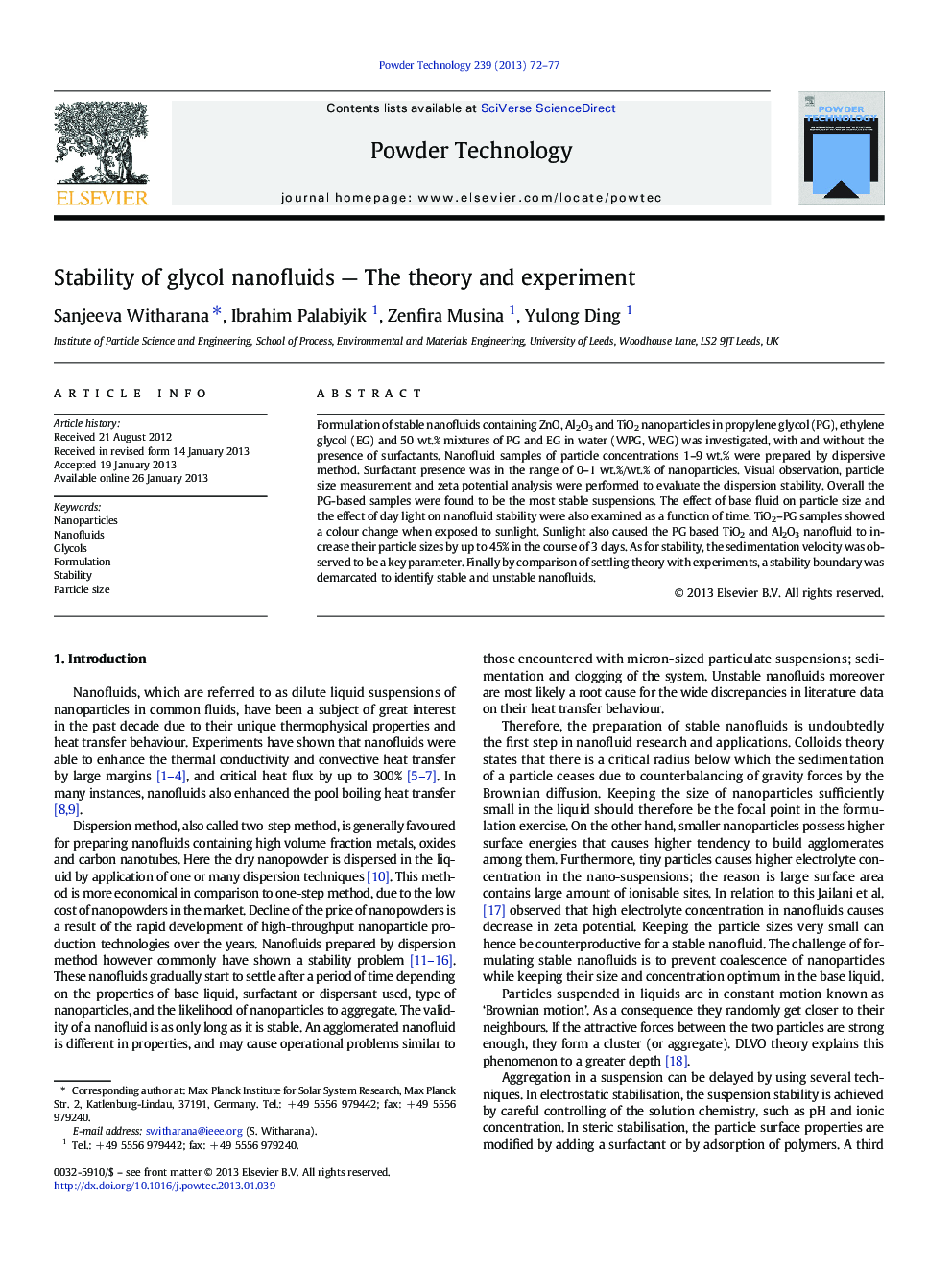| کد مقاله | کد نشریه | سال انتشار | مقاله انگلیسی | نسخه تمام متن |
|---|---|---|---|---|
| 236754 | 465685 | 2013 | 6 صفحه PDF | دانلود رایگان |

Formulation of stable nanofluids containing ZnO, Al2O3 and TiO2 nanoparticles in propylene glycol (PG), ethylene glycol (EG) and 50 wt.% mixtures of PG and EG in water (WPG, WEG) was investigated, with and without the presence of surfactants. Nanofluid samples of particle concentrations 1–9 wt.% were prepared by dispersive method. Surfactant presence was in the range of 0–1 wt.%/wt.% of nanoparticles. Visual observation, particle size measurement and zeta potential analysis were performed to evaluate the dispersion stability. Overall the PG-based samples were found to be the most stable suspensions. The effect of base fluid on particle size and the effect of day light on nanofluid stability were also examined as a function of time. TiO2–PG samples showed a colour change when exposed to sunlight. Sunlight also caused the PG based TiO2 and Al2O3 nanofluid to increase their particle sizes by up to 45% in the course of 3 days. As for stability, the sedimentation velocity was observed to be a key parameter. Finally by comparison of settling theory with experiments, a stability boundary was demarcated to identify stable and unstable nanofluids.
Shown in the picture is the view of four samples of 1 wt.% ZnO nanofluids two months after preparation. PG has the highest viscosity. ZnO–PG sample (right most) was the most stable. Plotted on the graph are Stokes' predictions for nanofluids. Horizontal line shows comparison with experiment; Stokes' near-zero velocity region is visibly stable too.Figure optionsDownload as PowerPoint slideHighlights
► PG, EG, PG-water, EG-water based Al2O3, TiO2, ZnO (1–9 wt.%) nanofluids were studied.
► Effect of surfactants (0–1 wt.%/wt.% of nanoparticles) and effect of daylight examined.
► Stability was evaluated by eye observation, size and zeta potential measurements.
► Daylight caused colour change and aggregation; but PG samples were more resilient.
► By comparison of theory and experiments, a stability boundary was established.
Journal: Powder Technology - Volume 239, May 2013, Pages 72–77